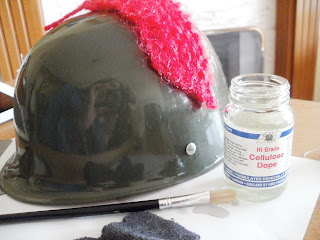 |
| Helmet Test With Dope |
 |
| Red Piece- Dope, Brown Piece- PVA |
Hello, this is the second part of my journal for my Foundation course work. My idea's have changed a bit so just flow with it, it'll be pretty cool in the end.
 |
| Helmet Test With Dope |
 |
| Red Piece- Dope, Brown Piece- PVA |